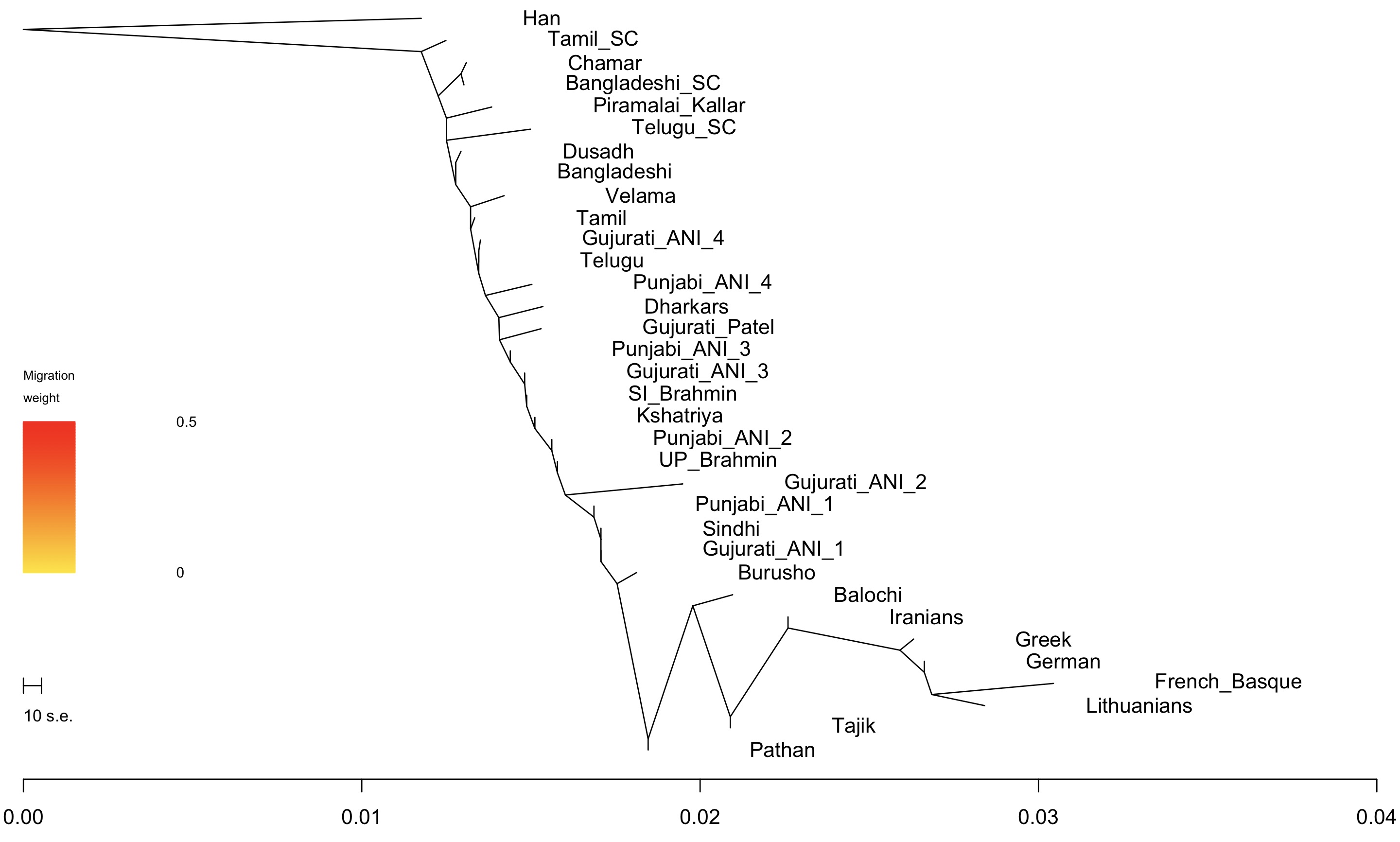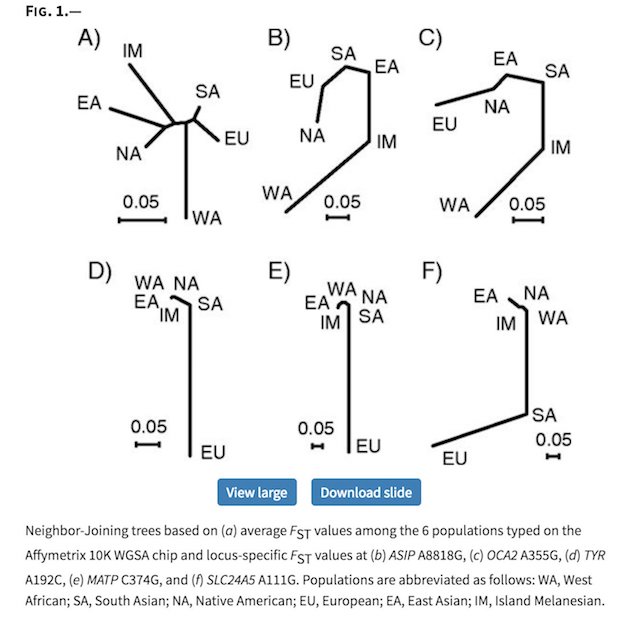At my other blog. Some charts.
Author: Razib Khan
Notes on South Asian genetics, 2018

In the post below Zach observes that the progressive author of a piece criticizing Ajit Pai has to note she too is a Gaud Saraswat Brahmin. Of course, she is progressive and opposes casteism no doubt. But to me “caste-dropping” that you are a Brahmin is like criticizing standardized testing, while observing that you also aced your standardized test. Not that that matters. Or that it proves anything.
But I’m posting this because there was a section on the genetic purity of Gaud Saraswat Brahmin’s of Karnataka. It caught my attention because I knew it was likely false. I’ve looked at South Indian Brahmins, and they generally look like they have gene flow from other South Indians. Also, if you use something called your eyes you can see that some South Indian Brahmins do not look like pure Indo-Aryan specimens at all.
Several years ago my friend Zack collected a bunch of data via his Harappa project. We’ve come further since then, but it’s still one of the best sources of information we have. Looking at the data there, and elsewhere, we can say a few things about South Asian genetics.
- Jatts are different. I don’t know much about Jatts personally, aside from the fact that they are quite proud of being Jatt online. But in Zack’s data, and my own analysis in the SAGP, Jatts are highly inflated for “European-like” ancestry compared to populations around them. They have the highest proportions in their part of South Asia. Even higher than Pathans.
If you asked me to say why, at this I do think Jatts do have a more recent gene flow than other groups in South Asia. If you talk to Jatts online about their history, you will know what their hypothesis for this exotic element is.
- Brahmins are different from other South Asians, and from each other. It will surprise no one that Brahmins are often somewhat different from non-Brahmins genetically. But, they also differ from each other.
Both South Indian and Bengali Brahmins mixed with the local population. Probably on the order of ~25% of the ancestry of these two Brahmin communities can be attributed to the local substrate. But, if you correct for East Asian admixture Bengali Brahmins are actually quite similar to the Brahmins of the Gangetic plains to the west. This comports with history.
A similar fraction seems reasonable for South Indian Brahmins, though perhaps more. The key issue that I have in this case is that the “European-like” proportion of South Indian Brahmins is about half of that of North Indian Brahmins. This would indicate half dilution. The admixture was probably from the higher end of the non-Brahmin caste hierarchy.
To get a sense of what I’m talking about, here are some percentages:
| Ethnicity | Dataset | N | SIndian | Baloch | Caucasian | NEEuro | NEEuro ratio |
| ap-brahmin | 25 | 49% | 36% | 3% | 6% | 6% | |
| iyengar-brahmin | harappa | 8 | 47% | 37% | 4% | 6% | 6% |
| iyer-brahmin | harappa | 11 | 47% | 37% | 5% | 5% | 5% |
| brahmin-tamil-nadu | metspalu | 2 | 47% | 38% | 6% | 5% | 5% |
| tn-brahmin | 14 | 47% | 38% | 6% | 4% | 5% | |
| karnataka-brahmin | harappa | 5 | 46% | 35% | 5% | 6% | 7% |
| oriya-brahmin | harappa | 2 | 45% | 35% | 2% | 8% | 9% |
| kerala-brahmin | harappa | 1 | 43% | 39% | 4% | 6% | 6% |
| brahmin-uttar-pradesh | metspalu | 8 | 42% | 36% | 5% | 12% | 12% |
| bengali-brahmin | harappa | 8 | 41% | 33% | 5% | 10% | 11% |
| up-brahmin | harappa | 4 | 39% | 37% | 7% | 11% | 12% |
| bihari-brahmin | harappa | 1 | 39% | 38% | 5% | 11% | 12% |
| rajasthani-brahmin | harappa | 2 | 34% | 36% | 8% | 12% | 13% |
| punjabi-brahmin | harappa | 3 | 34% | 39% | 10% | 11% | 11% |
| kashmiri | harappa | 3 | 30% | 37% | 14% | 9% | 10% |
| pashtun | harappa | 7 | 19% | 34% | 20% | 11% | 13% |
| maharashtrian | harappa | 6 | 46% | 35% | 5% | 5% | 6% |
| tamil-nadar | harappa | 5 | 57% | 31% | 2% | 0% | 0% |
| gujarati-patel | harappa | 2 | 55% | 41% | 0% | 0% | 0% |
| bengali | harappa | 11 | 47% | 27% | 2% | 4% | 5% |
| ap-reddy | harappa | 6 | 54% | 36% | 3% | 0% | 0% |
Don’t take the percentages as literal populations.
- Some groups that think they are special are not so special. Kashmiri Pandits, for example, fancy themselves as somewhat better than other South Asians, often because of their West Asian or even European physical appearance. But the genetic data indicates ancestrally they’re not surprising in any way in the context of their geographic locale.
- Geography is not that predictive. Well, it sort of is. But you see that groups like Chamars in Uttar Pradesh are similar to South Indian populations.
What does Ajit Pai’s race have anything to do with net neutrality?
This comedian has some choice words for the FCC chairman pic.twitter.com/QKEalkZaWd
— NowThis (@nowthisnews) November 25, 2017
Not a surprise that Hari Kondabolu goes there. The problem with making everything about racial dynamics is that more white people in the United States might take a page from that. I don’t wish to encourage that.
Also, believe it or not racializing a topic that the majority probably agrees with you on might make it less popular. But if you now talk to people who just agree with you all the time on these things you might not remember that.
Race is not just skin color
“The southern Indians resemble the Ethiopians a good deal, and, are black of countenance, and their hair black also, only they are not as snub-nosed or so woolly-haired as the Ethiopians; but the northern Indians are most like the Egyptians in appearance.”
– Arrian
I might almost say that the same animals are to be found in India as in Aethiopia and Egypt, and that the Indian rivers have all the other river animals except the hippopotamus, although Onesicritus says that the hippopotamus is also to be found in India. As for the people of India, those in the south are like the Aethiopians in colour, although they are like the rest in respect to countenance and hair (for on account of the humidity of the air their hair does not curl), whereas those in the north are like the Egyptians.
-Strabo
The plot above is from Genetic Evidence for the Convergent Evolution of Light Skin in Europeans and East Asians. It’s a 2007 paper. For those of you not versed in genetics, 10 years is like the difference between the First Age and Third Age on Middle Earth. For those of you not versed in Tolkien, 10 years is like the difference between Gupta India and Maratha India? I think?
Basically, the authors looked around the regions of the genome of loci known to be implicated in pigmentation variation in 2007, which mostly started from differences between Europeans and Africans. In the plot above you see pairwise genetic distances visualized in a neighbor-joining tree. The populations are:
SA = Asians, IM = Island Melanesians, WA = West Africans, EU = Europeans, EA = East Asians, and NA = Native Americans
What you see is that pigmentation loci are not phylogenetically very informative. Because of ascertainment bias in discovery Europeans are an out-group on many of the genes. But overall you see that the trees generated by a relationship on pigmentation genes do not conform to what we’d expect, where Africans are an outgroup to non-Africans. This is not surprising, as any given locus is not too phylogenetically informative. Additionally, pigmentation is a trait where selection has likely changed allele frequencies a lot, so it’s not a very good trait to look at to determine evolutionary relationships.

I bring this up because The New York Times and other publications are reporting on a new paper in Science, Loci associated with skin pigmentation identified in African populations, with headlines like Genes for Skin Color Rebut Dated Notions of Race, Researchers Say.
The Science paper is very interesting because it helps to make up for the long-term ascertainment bias in the literature, whereby European differences from other groups helped to discover pigmentation loci of interest. The big topline result is that there’s a lot of extant variation within Africans, and much of it is very old, pre-dating modern humans by hundreds of thousands of years, implying long-term balancing selection to maintain polymorphism.
Here’s a quote from The New York Times piece:
For centuries, skin color has held powerful social meaning — a defining characteristic of race, and a starting point for racism.
“If you ask somebody on the street, ‘What are the main differences between races?,’ they’re going to say skin color,” said Sarah A. Tishkoff, a geneticist at the University of Pennsylvania.
…The widespread distribution of these genes and their persistence over millenniums show that the old color lines are essentially meaningless, the scientists said. The research “dispels a biological concept of race,” Dr. Tishkoff said.
I can go along with all the sentences more or less except the last. Skin is the largest organ we have, and it’s pretty salient. West Asian Muslims regularly referred to Indians as “black” (early Islamic Arabs referred to the people of Sindh as “black crows”). They defined themselves as white (though contrasted their own olive complexion with ruddy Europeans). The Chinese referred to themselves as white, and Southeast Asians, such as the inhabitants of the ancient Cambodian kingdom of Funan, as black. Among South Asians, skin color is also very salient. During the period when Pakistan included a western and eastern half the West Pakistanis were known to refer to the Bengalis as blacks, while East Pakistanis who went to study in the West, like my father, were surprised that not all Pakistanis were white like Ayub Khan.

But racial perception and categorization are not identical with skin color. The ancients knew this intuitively, as the quotes from Arrian and Strabo above suggest. They were aware that South Asians were dark-skinned, but those in the north were lighter than those in the south, and that those in the south resembled Africans in the range of their complexion. But, they also knew that it was not difficult to distinguish a South Asian from an African in most cases, because South Asians have different hair forms and to some extent facial features, from Africans.
I know this myself personally. Living in almost white areas of the United States for most of my childhood I encountered some racism. My skin tone is within the range of African Americans. But when it came to racial slurs I was usually called “sand nigger”, or more sometimes “camel jockey.” Please note that the modifier sand. Even racists understood to distinguish people of similar hues who were clearly physically distinctive.
Conversely, African Americans did not usually recognize me as African American. Living in the Pacific Northwest there aren’t many non-whites. It’s also very rainy. Sometimes when I was wearing my Columbia jacket with hood black men walking from the other direction on the sidewalk would start to nod at me, assuming I was black. But mid-way through the nod as they approached me they recognized that despite my brown color I was not African American and would stop the motion and switch to a manner of distanced politeness as opposed to informal warmth.*
Finally, I also had East Asian friends who were very light-skinned. As light-skinned as any white person of Southern European heritage. That did not prevent racists from calling them “chinks” or (more rarely) “gooks.” These racists were seeing beyond the skin color.
If ancient authors from 2,000 years ago understood that race is more than skin color, and if genuine bigots understand race is more than skin color, I fail to understand why so often the public discourse in the United States acts as if race is just skin color. We know it’s not so.
The reason I’m posting this on Brown Pundits is that the focus on skin color made sense to me growing up in the United States, but as someone of South Asian ancestry I also knew it was not sufficient as a classifier. I knew when I was probably around five. Many South Asians see a huge range in skin color within their immediate families. That is, empirically the fact that there were large effect QTLs segregating within South Asians is obvious to any South Asian who grew up around South Asians.**
My mother is of light brown complexion. My father is of dark brown complexion. My mother’s complexion is fair enough that she is usually assumed to be Latina if she doesn’t speak (her accent is clearly South Asian), and in cases has been misjudged to be Southern European. My father, like his mother, is in contrast on the darker side. Their Bengali friends would joke that they were an interracial relationship.
My father’s father was very light skinned, and his mother was very dark skinned. Some of his siblings were dark, some of them were light, and some of them were between. One of my father’s brothers is basically a doppelganger of my father, except he is lighter skinned.
And yet there was never a question that both my parents were ethnically Bengali. They were both people with deep roots in Comilla in eastern Bengal. Now that I have their genotypes I can tell you that my parents are genetically clearly from the same region of Bengal; they cluster together even compared to other Bangladeshis. In fact, my father is more Indo-Aryan (every so slightly) shifted than my mother. I suspect it is through his mother, whose father was born into a family of recently converted Brahmins. It is clear that skin color is not predicting phylogeny in this case, and I am sure many South Asians intuitively grasp this because of the variation in complexion they see across their families, who are usually from the same sub-ethnic group in any case.***
A multiracial United States is going to be more complex world than the situation before 1965, when America’s racial consciousness was partitioned between black and white (notwithstanding Native Americans, Hispanos and other Latinos in the Southwest, and a residual of Asian Americans). But sometimes I feel the intellectual and cultural elite of this nation is stuck in the paradigm of 1964.
* I have a friend from Kerala in South India who has talked about being mistaken for being Ethiopian.
** I am the only South Asian my daughter has grown up around, and her complexion is far closer to her mother’s than my own. She did have a difficult time distinguishing me from black males in her early years because to her my dark-skin is very salient. When her mother asked her to give reasons why African American males might look different from her father, she immediately clued in on the hair and facial features.
*** Black Americans and Middle Easterners, and a whole host of other groups where pigmentation loci segregation in appreciable frequencies, can all see that differences in skin color do not necessarily denote differences in race, since there is so much intra-familial variation.
Life expectancy in South Asia
India is very heterogeneous. Nevertheless, the contrast between Assam and Bangladesh is very curious to me.
| 1 | Kerala | 74.9 | 74.0 |
| 2 | Delhi | 73.2 | – |
| 3 | Jammu and Kashmir | 72.6 | – |
| 4 | Uttarakhand | 71.7 | 60.0 |
| 5 | Himachal Pradesh | 71.6 | 67.0 |
| 5 | Punjab | 71.6 | 69.4 |
| 5 | Maharashtra | 71.6 | 67.2 |
| 8 | Tamil Nadu | 70.6 | 66.2 |
| 9 | West Bengal | 70.2 | 64.9 |
| 10 | Karnataka | 68.8 | 65.3 |
| 11 | Gujarat | 68.7 | 64.1 |
| 12 | Haryana | 68.6 | 66.2 |
| 13 | Andhra Pradesh (includes Telangana) | 68.5 | 64.4 |
| 14 | Bihar | 68.1 | 61.6 |
| * | India | 67.9 | 63.5 |
| 15 | Rajasthan | 67.7 | 62.0 |
| 16 | Jharkhand | 66.6 | 58.0 |
| 17 | Odisha | 65.8 | 59.6 |
| 18 | Chhattisgarh | 64.8 | 58.0 |
| 19 | Madhya Pradesh | 64.2 | 58.0 |
| 20 | Uttar Pradesh | 64.1 | 60.0 |
| 21 | Assam | 63.9 | 58.9 |
To be brown is to be a civilization
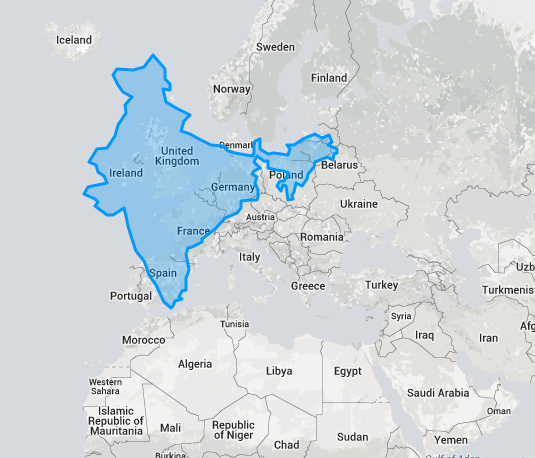
Though I often disagree with him, I do enjoy Zach’s perspective on things because they are different from mine, though we exhibit similarities (e.g., both of us generally align with the center-Right in Anglophone societies). Zach may be one of the first cosmopolitan desis in his pedigree; he, himself of part-Persian heritage, marrying a South Indian Sindhi, probably to raise a family in England. In contrast, I may be the last brown person in my pedigree for a while, fading into legend and myth (or infamy!).
But one of the things I think is important to emphasize is South Asia is a civilizational entity straight-jacketed for historical reasons into a few nation-states. Though India and China are often compared together, they are totally incomparable insofar as the Han majority of China exhibit a racial and linguistic unity which South Asians do not (even though southeast Chinese dialects are unintelligible with Mandarin, the written language is the same).
By and large, I am predisposed to agree that someone like Zach is more prototypically South Asian than I am. Despite his religious heterodoxy his cultural rootedness in the Northwest quadrant of the subcontinent does put him at the “center of the action,” so to speak. In contrast, my own family’s recent origins are on the far eastern fringe of recognizably desi territory…. That is, my family is from the eastern portion of eastern Bengal (my grandmother was almost killed by the crazy elephant of the maharani of Tripura!). It’s interesting that 3,000 years after the emergence of Iron Age South Asian cultures the fulcrum of South Asian identity is where it began all those millennia ago (there was a period between the Mauryas and the Guptas when Bihar was the center).
Talking about what is more prototypically desi is like talking about what is more prototypically “European.” Being French or German is more prototypically European than being Albanian or Russian. We could argue why, but in your heart you know it’s true. There are definitions of Europeans which exclude Albanians and Russians (even though I’d disagree with those personally), but no plausible ones which exclude French and Germans.
Finally, I do think it indicates the limits and flexibility around race and brown identity. As Zach has said repeatedly he is very light-skinned (and part Iranian to boot). Myself, I don’t think anyone would describe me as either light-skinned or dark-skinned; I’m pretty much the average South Asian in complexion. Brown. Not light brown. Or dark brown. Literally just brown. But that doesn’t really weight much in terms of who is “more desi” or not. I have never watched a Bollywood film all the way through. That matters more.
Why Brown Pundits?
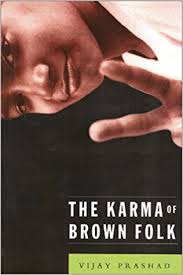 This post is in response to Zach and Zimriel.
This post is in response to Zach and Zimriel.
Why Brown Pundits? Why this blog? And why do I post here, as opposed to Gene Expression or Secular Right, or various other venues which I have access to?
To a great extent the origins of this blog for me go back to the early 2000s, when I began to have some discussions with a few South Asian friends/readers through carbon copy emails. Two of those individuals later went on to co-found the Sepia Munity weblog.
Growing up in an overwhelmingly white America my understanding of South Asians was parochial and superficial, or at least academic, until I entered adulthood. At that point I met various South Asian Americans, and formed some friendships of some durability, and began to see how they viewed the world. How their experiences differed from mine, and how they were similar.
There was, and is, a lot of diversity. But I didn’t see too much of my own perspective being represented. Books such as the Karma Of Brown Folk reflected what I think the most dominant and “hip” element of American South Asian subculture, which is culturally left-wing, and aspires toward what has become bracketed under the term “intersectional.”
I’m not saying that these people are the majority. Just that they vocal, and active, and the ones who are likely to agitate and organize around a South Asian American identity (as opposed to local particularistic identities, such as being a Tamil Brahmin, or a more general identity, such as being a liberal Democrat or conservative Republican).
This blog is a way to get some more heterodox and diverse views out there. For example, I am a libertarian leaning conservative who is an atheist, whose children are “white presenting” as they would say today. I am Bengali by birth and upbringing, but it is unlikely that my descendants will be Bengali in anything but distant lineage. That’s a statement of fact, and neither positive or negative. It probably influences my negative attitude toward fashionable anti-white poses struck by gentry left-wing American South Asians (poses struck in solidarity with other “PoC”), as anti-white prejudice impacts my family directly.
As for what I post here vs. what I post elsewhere: if I’m not aiming toward generality of inference or lesson I’ll post them here. A South Asian illustration of a general principle can be posted elsewhere, but sometimes issues and questions exhibit strong South Asian particularities, and they belong here.
Religion trumps race in Sri Lanka

Monk-led mob attacks Rohingya refugees in Sri Lanka:
“These are Rohingya terrorists who killed Buddhist monks in Myanmar,” the monk said in his live commentary on Facebook, pointing to Rohingya mothers with small children in their arms.
Sri Lanka’s extremist Buddhist monks have close links with their ultra-nationalist counterparts in Myanmar. Both have been accused of orchestrating violence against minority Muslims in the two countries.
South Asians understand that the power of religion as opposed to race more than most people. The craven and obsequious respect granted to Arabs (and to a lesser extent Iranians and Turks) by South Asian Muslims is so natural and taken-for-granted that it only seems that way to outsiders. Despite the fact that Muslims and Hindus of any given region are clearly related by blood (in some cases, whole portions of castes convert in toto), they often speak as if they are racially distinct. Muslims somewhat sincerely, but affirming obviously false West Asian Asian, and Hindus more performatively, by asserting that India is for the Hindu race, from which Muslims are excluded.
The above story is a different dimension: the identification of Sri Lankan Buddhism monks with the Buddhist Burmese against the Rohingya. There is some historical background to this, as both the Sinhala and Burmese are predominantly Theravada Buddhist peoples. During periods of Buddhist decline in Sri Lanka lineages were reinforced form Burma, and vice versa.
The Rohingya, as I have stated, are racially really no different from the people of Bengal. And like Bengalis the Sinhala are a dark-skinned South Asian people (there are still debates as to whether the Indo-European language in Sri Lanka came from Gujarat or Bengal). The Sri Lankans I’ve met could easily pass as Bengali, and in general vice versa.
It’s an interesting observation from an American perspective, where race is the most salient factor in social-political identification. At least explicitly.
When all you have is postcolonial theory everything is about the white man
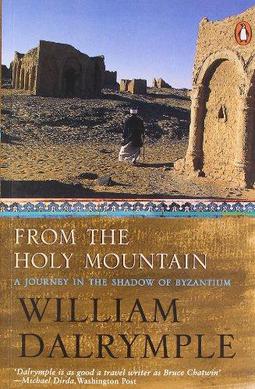 Recently I read a piece, Confronting White Supremacy in Christianity as a Christian South Asian, which is interesting from an anthropological perspective. After all, I don’t know what it’s like to be a progressive South Asian Christian, which is the perspective of this author. But as I read the piece I felt that it elided and conflated so much. A much deeper and richer story was being erased so as to serve up another illustration of the primacy of white supremacy.
Recently I read a piece, Confronting White Supremacy in Christianity as a Christian South Asian, which is interesting from an anthropological perspective. After all, I don’t know what it’s like to be a progressive South Asian Christian, which is the perspective of this author. But as I read the piece I felt that it elided and conflated so much. A much deeper and richer story was being erased so as to serve up another illustration of the primacy of white supremacy.
If you read From the Holy Mountain: A Journey Among the Christians of the Middle East you know that how white American Christians treat non-white Christians can be rather ridiculous. One of the stories I recall is of an Arab Christian waiter in Jerusalem who wore a cross, and was very irritated with white Americans with strong Southern accents would inquire when he had converted to Christ. This person of course privately scoffed, and reflected that when his ancestors had been Christians for centuries his customer’s ancestors were still worshipping pagan gods.
Here is a passage from the above piece which I think really confuses:
Christianity in India highlights a violent history of white supremacy through colonization and mass conversion by Europeans including, the Portuguese, Irish, Dutch, Italian, French, and English many of whom hold cultural influence that has remained to this day in places like Kerala, Pondicherry, and Goa. Similarly, there doesn’t appear to be much of a difference in the diaspora. For instance, my family converted to Christianity while living under the Apartheid regime in South Africa, an entire system of white supremacy supported by ‘Christian’ values.
The writer is a young Canadian woman whose family is from South Africa of Indian heritage. Additionally, though she never is explicit about it, her family seems to be evangelical Protestant. This is an interesting perspective, but it is a totally different one from that of South Asian Christianity.
Bracketing Kerala with Pondicherry and Goa is simply misleading. Christians are nearly 20% of the population of Kerala, and most are St. Thomas Christians, whose origins predate European contact with India by many centuries. Originally part of the territory of the Persian Church of the East, modern St. Thomas Christians have splintered into numerous groups with varied affiliations, in part due to the trauma of contact with Portuguese Catholicism. But through it all they maintain an indigenous Christian identity which is distinct from any colonial imprint.
Second, large numbers of India’s Christians are converts from Dalit populations, or, tribal peoples in the Northeast who are racially and culturally distinct from other South Asians. The framing in the piece is that South Asian Christianity has to bear the cross of colonialism, but a good argument can be made that for Dalit converts and tribal groups in the Northeast Christianity is the vehicle for resistance to oppression, assimilation, and colonialism on the part of the dominant South Asian cultural matrix.
This is not to say that the piece does not speak to a real dynamic. North American white evangelical Protestantism is inordinately freighted with racialized baggage. And it is easy to reduce into the Manichaean framework of postcolonial theory, where whites are the sole agents of action in the world. But to the generality, Indian Christianity has many disparate threads, and this sort of reduction is misleading.
On the Rohingya issue
I have a post over at my primary blog, Rohingya Unmasking Complexity In A World We Want Simple. Because the Rohingya issue is going to be in the media spotlight for a bit in the near future we need to be clear about the deep historical facts, which frankly the press is going to not be concerned about in their reporting.
